The house is a classic five-part Georgian built in 1922, centered around the main core- the dining room, parlor, foyer and music room- with a south transition room, or hyphen, leading to the kitchen and a north hyphen leading to the library. The first floor of the principal house is, in terms of the architectural detailing, almost entirely 18th-century. Efforts were made to preserve certain important elements like the original pine floors, the moldings on the foyer arch and the dining room’s plaster ceiling and mantel. The paint palette selected and used throughout the house (creamy yellows and blue-greens) was based on the traditional hand-painted silk wall covering used in the dining room. All doors were replaced with solid walnut.
The master suite relies heavily on the Greek Revival style in its moldings (based on designs by Asher Benjamin) and exemplifies rich simplicity in its yellow and green color scheme. The approach was chosen in part because it complements the Art Deco style of the lady’s bathroom suite. That bathroom is uniquely feminine with a touch of old Hollywood glam, featuring a marble tub, crystal chandelier from England, enormous mirrors and custom-designed, platinum-leaf furniture that gives the suite a glimmering patina. The second bathroom is more muscular and reflects the owner’s love of the Orient, though the most unique feature actually came from Europe. The bathroom suite judiciously showcases stained-glass windows and doors— flanking the sink, for example, and the closet doors— which are 19th-century Scottish in origin, but were purchased by the owner while in Asia.
A staircase off the master suite leads up to a third level in the central core where the owners have established a large office space. Dormers provide ample natural light and the space could easily be converted to another bedroom suite for a larger family or for guests.
The staircase located in the South hyphen leads to the lower level where a long corridor conducts to the other side of the house, to the bottom of the floating staircase of the North hyphen. Several rooms, including a catering kitchen and possible staff quarters, are located off of the corridor.
Just beyond, another corridor leads to a spacious workshop, and down several steps to the “ski room” where large cubicles and hanging racks permit storage of sailing and ski equipment. The corridor ends at the entrance to the 9-car garage, featuring epoxy floor, large built-in cabinetry and a mud room with oversized tubs/sinks for cleaning equipment and a shower and toilet. Another large storage room (with wine cellar cabinet) is located off of the garage and leads back into the house. Changing rooms, bathrooms and toilets are conveniently located here for guests using the infinity pool located just outside and accessible through an egress with a large storage room for pool supplies close by. Additionally, a large utility room containing air handler units serves as storage space. Few steps up lead back to the common area room with portholes looking into the infinity pool.
On the north side of the home, the hyphen transitions from the music room to the library. The hyphen accommodates an oversized powder room and coat closet. French doors leading to the rear balcony and a spectacular floating stairway of antique loblolly heart pine leads up to the family bedrooms and down to entertaining space.
The hyphen leads to the magnificent library where mahogany and American oak paneled walls are paired with a hand-tooled leather ceiling and 18th-century brass chandeliers. The room includes a wet bar, fireplace with a green marble surround matching the powder room’s vanity. It overlooks the patio adjacent to the infinity pool.
The family room’s arched windows and double doors were inspired by orangeries found in traditional Georgian homes and its limestone cornice, pilaster and balusters on the exterior complement the adjacent pool pavilion, limestone terraces and a 60-foot infinity edge pool.
Three pairs of magnificent glass arched double doors made of imported teak infuse the family room with sun while an oversized limestone fireplace elegantly adorns the room. The ceiling, built-in cabinets, wainscoting and herringbone-patterned floor are entirely made of imported teak. The glass doors of the built-in cabinets were specially made in India.
The outdoor pool pavilion, a reflection of the family room structure, features a fireplace and two sleek alabaster chandeliers and serves as an outdoor dining area. It is wired for gas and water so that an outdoor kitchen could easily be added.
Situated just below the family room and pool pavilion is the guest wing. The one-story guest wing consists of two bedrooms (each with en suite bath) and a spacious common room filled with Asian artifacts. Eye-catching as these antiques are, the room’s ‘wow factor’ derives from two windows that, like giant portholes, offer underwater views into the adjacent pool interior, aquarium-style. The spacious workout room located next door enjoys peaceful views of the fountain. From the guest wing a short corridor leads back to the rotunda.
The two guest rooms in the main house are very similar, with expansive closet space and bathrooms.
The dock, accessed via a funicular or on feet is equipped with a boat lift and water hose. Ten feet deep at low tide, the dock can accommodate sailing ships and offers 6 boat slips.
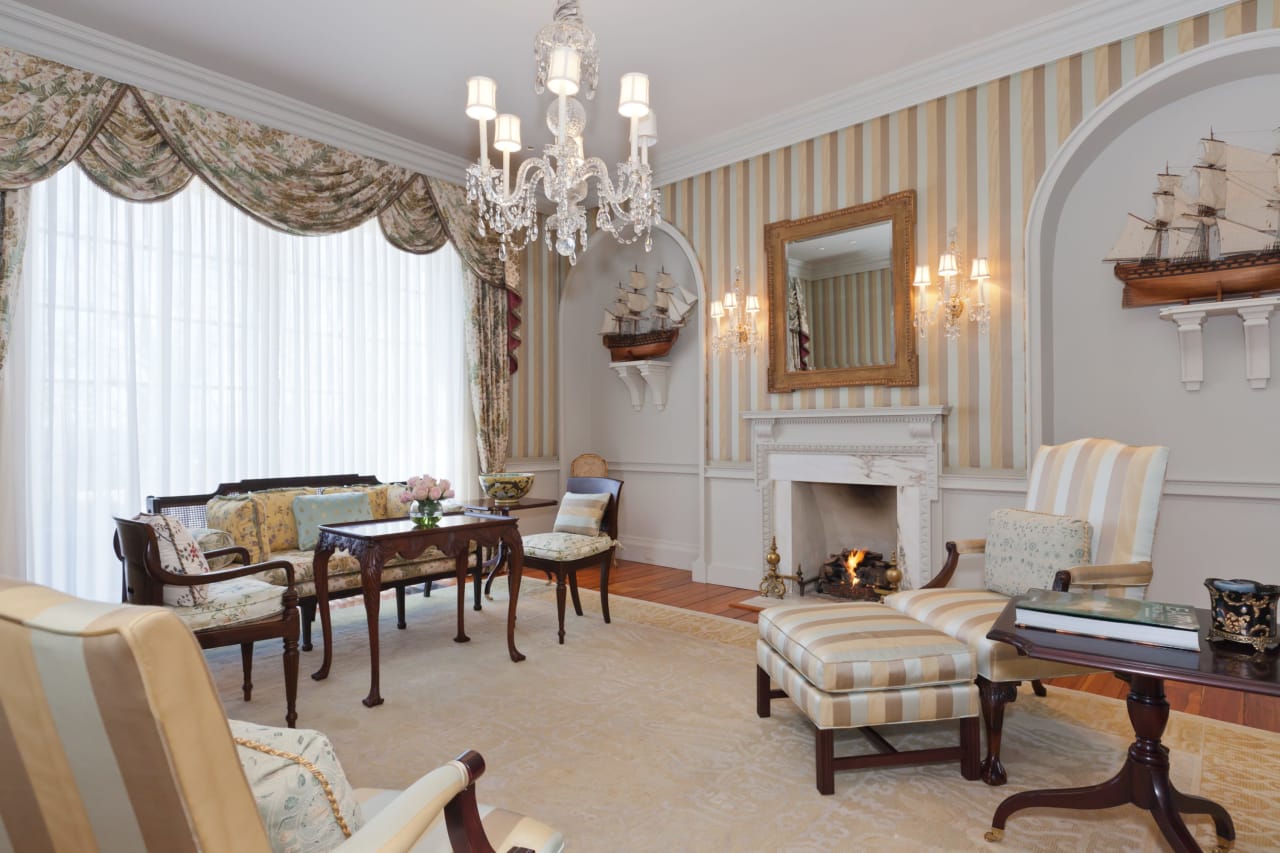
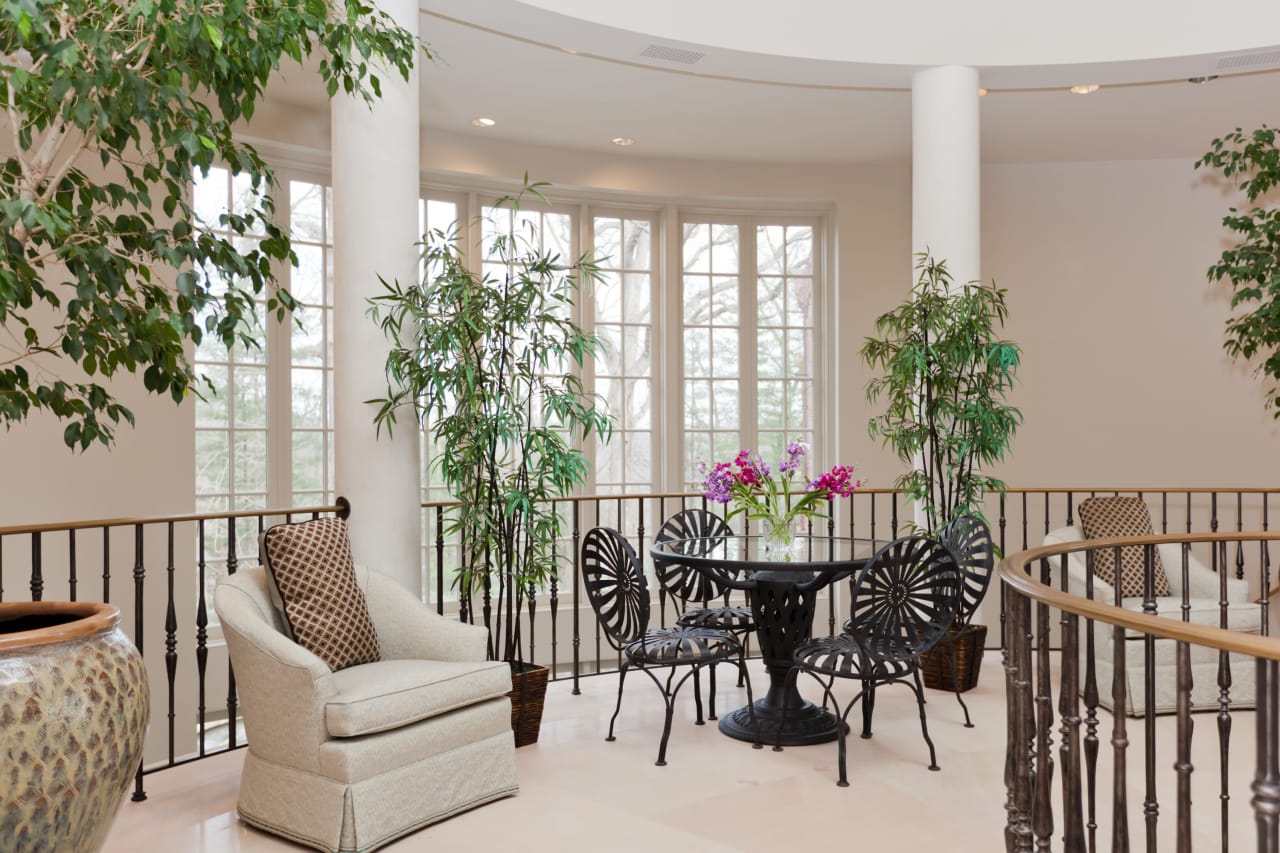
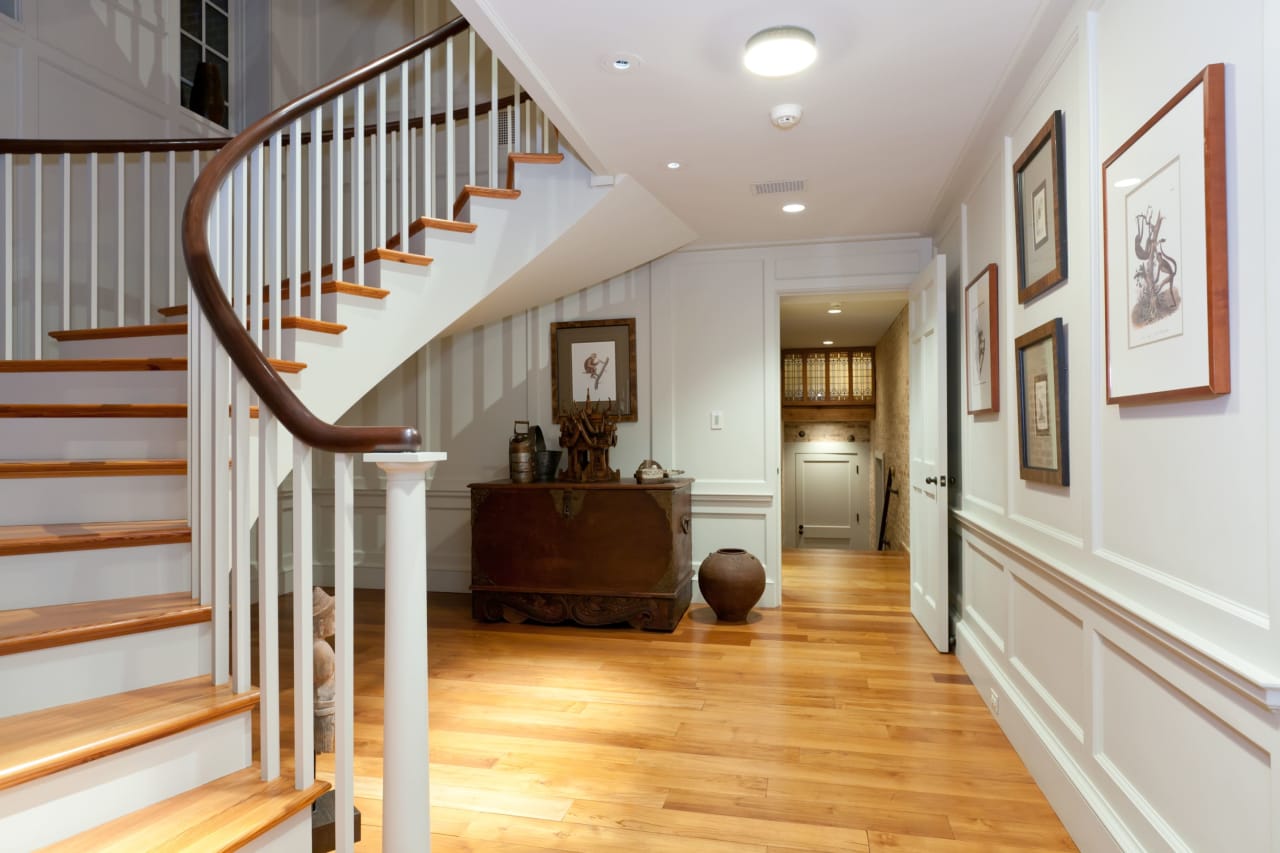
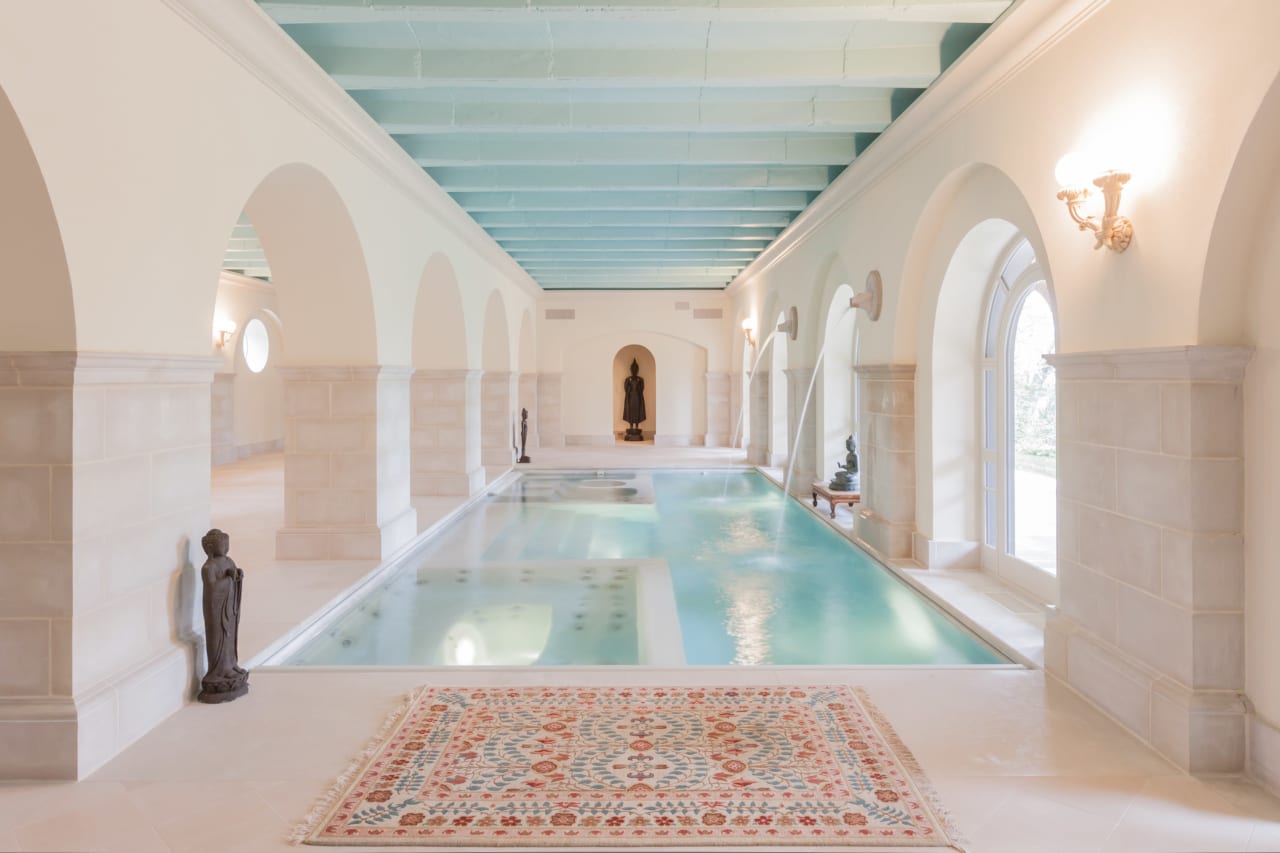
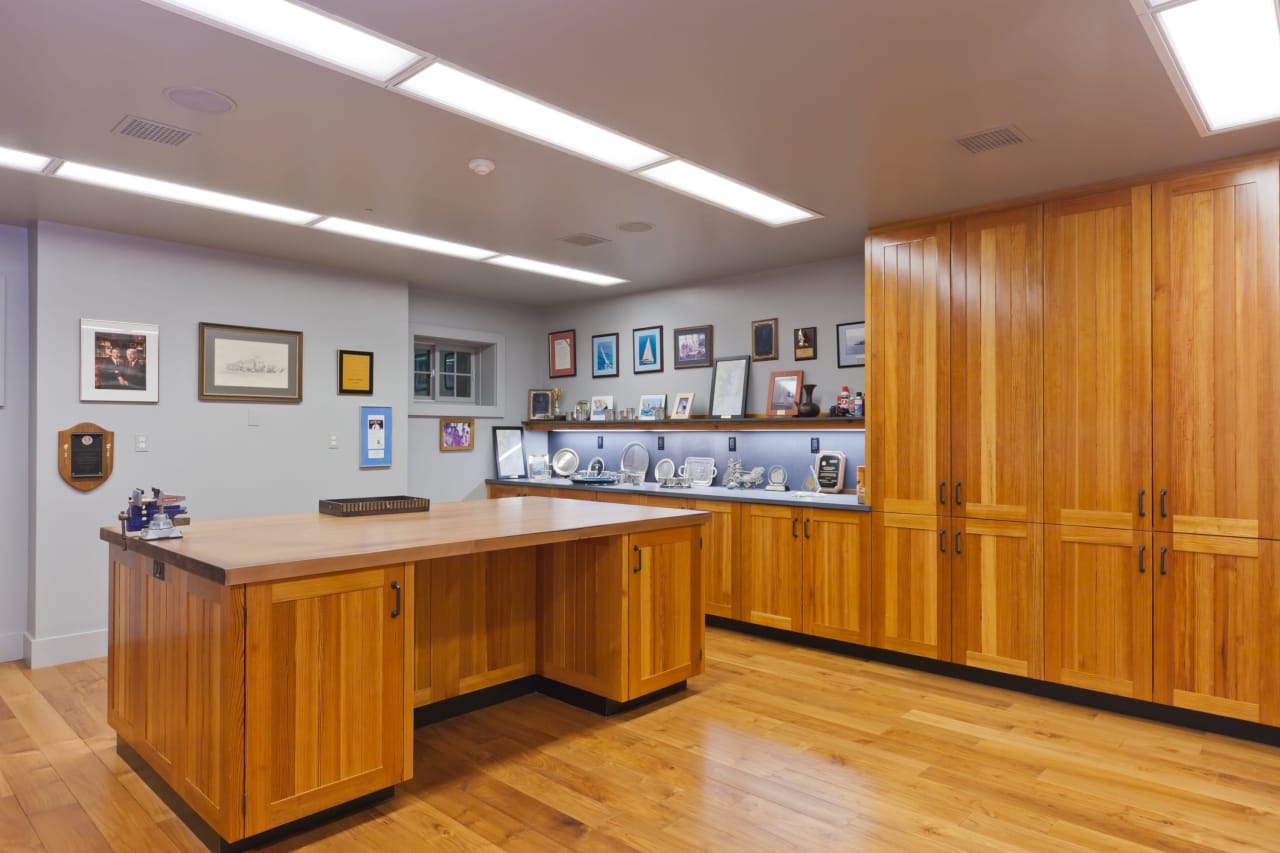
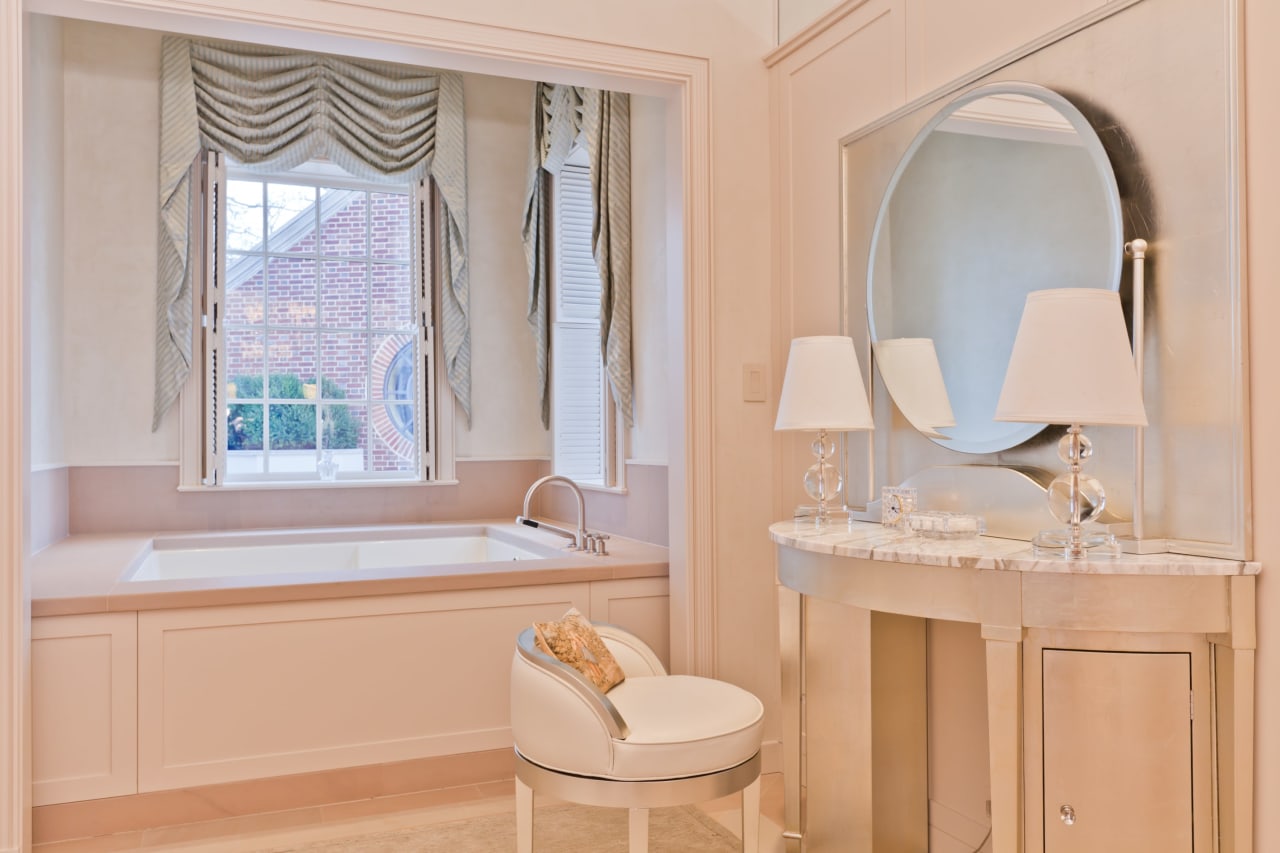
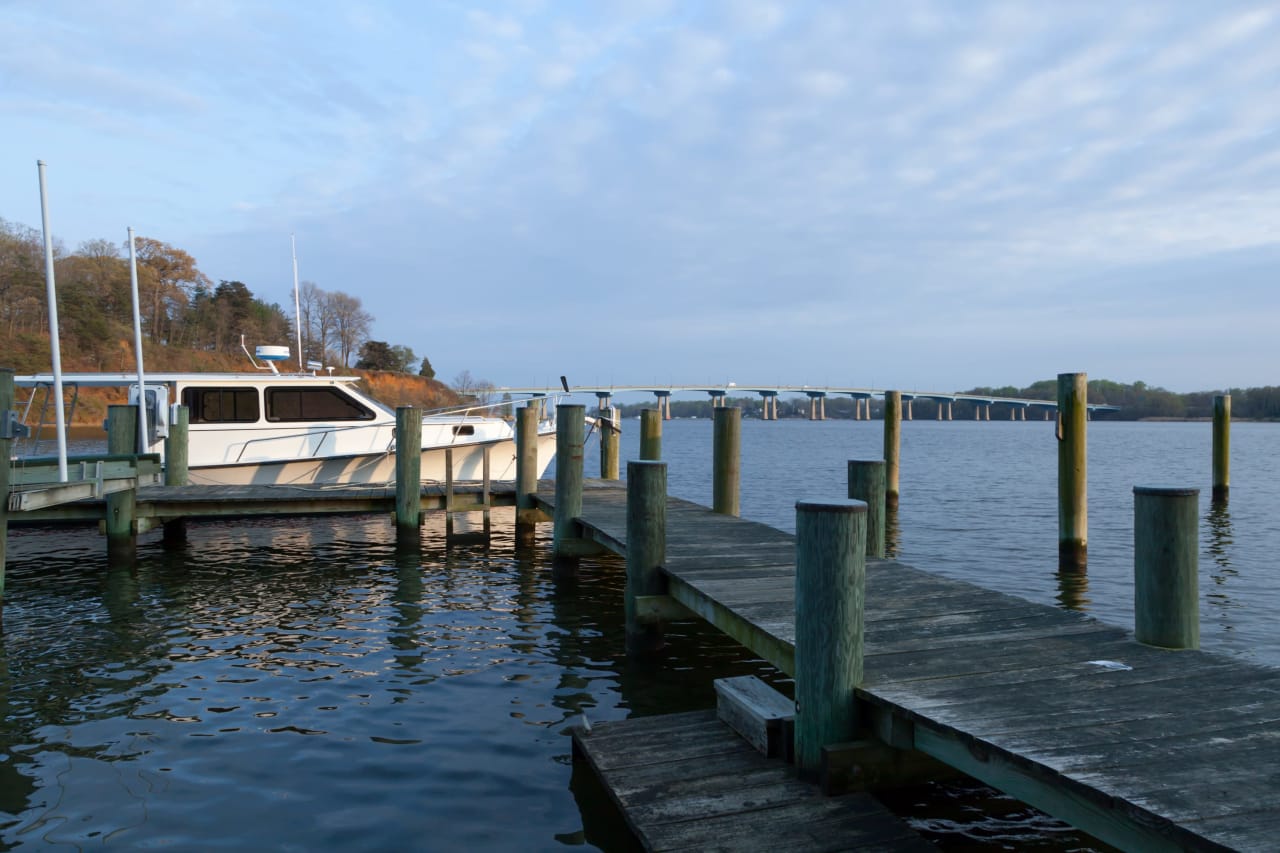
Discover the history of the Friary at the Severn and watch how it has evolved.


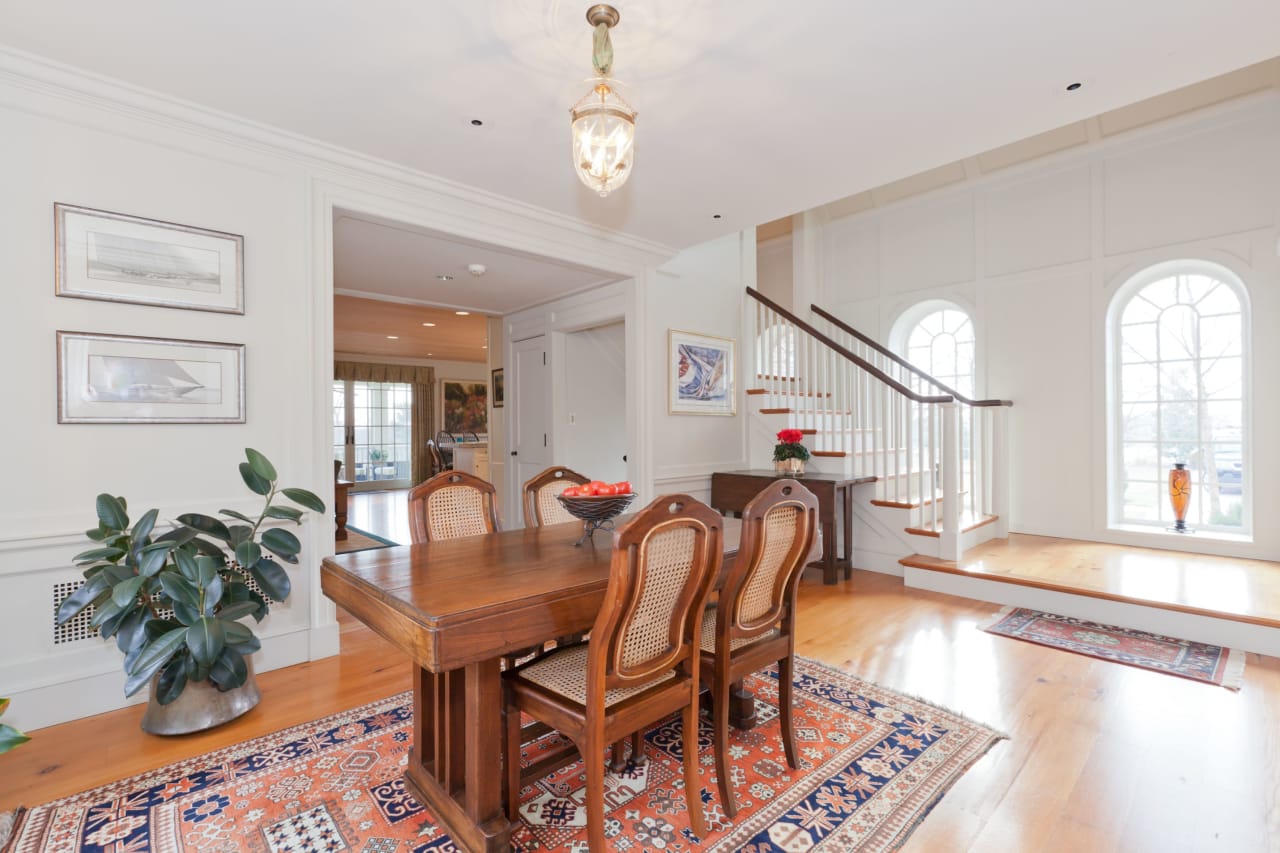

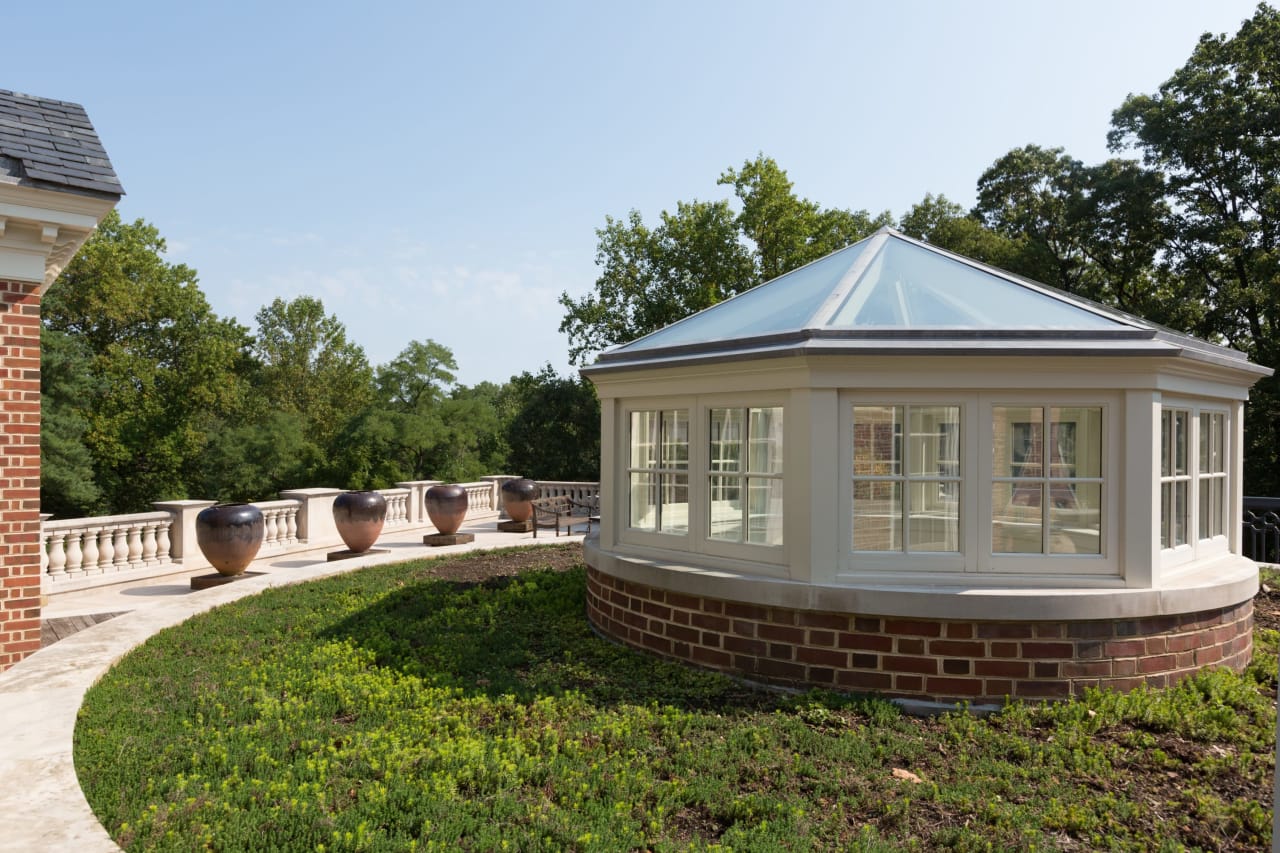
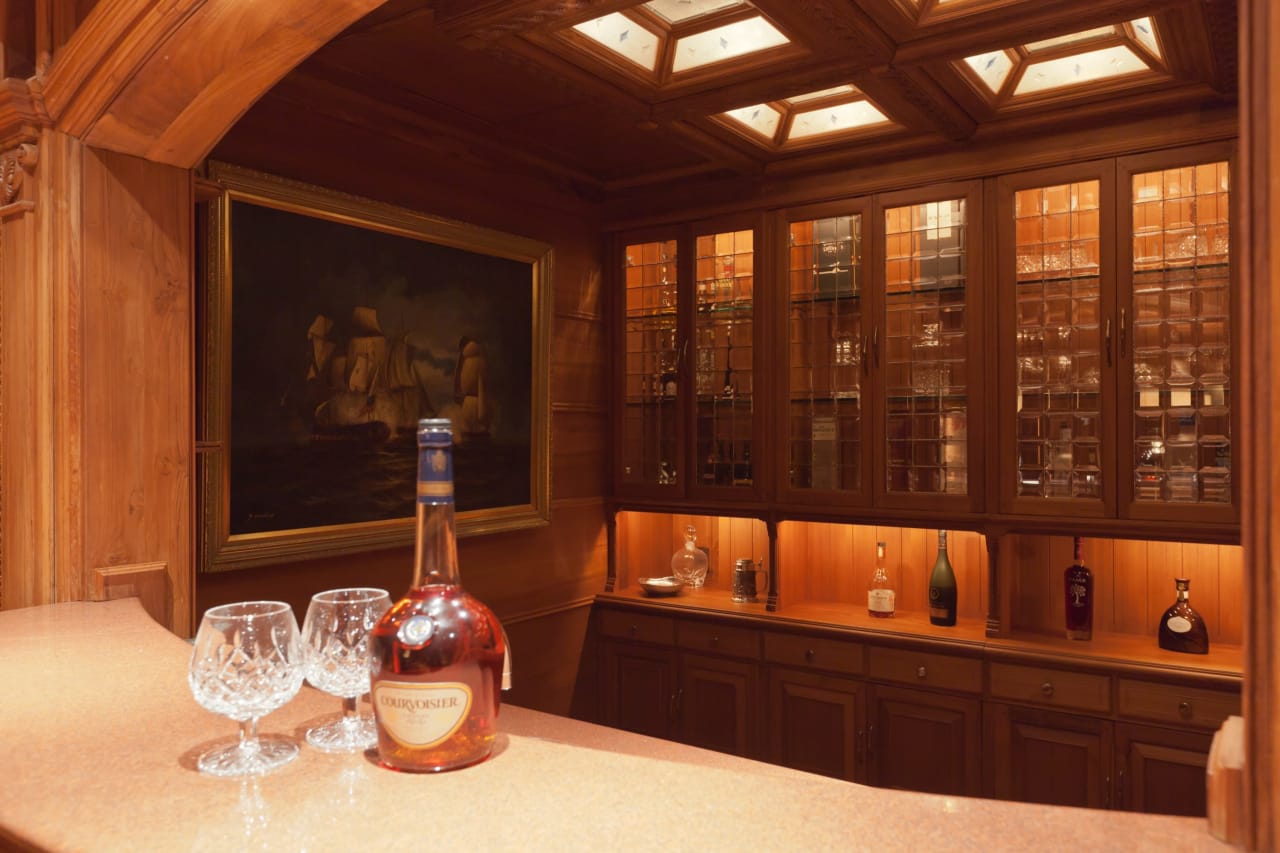
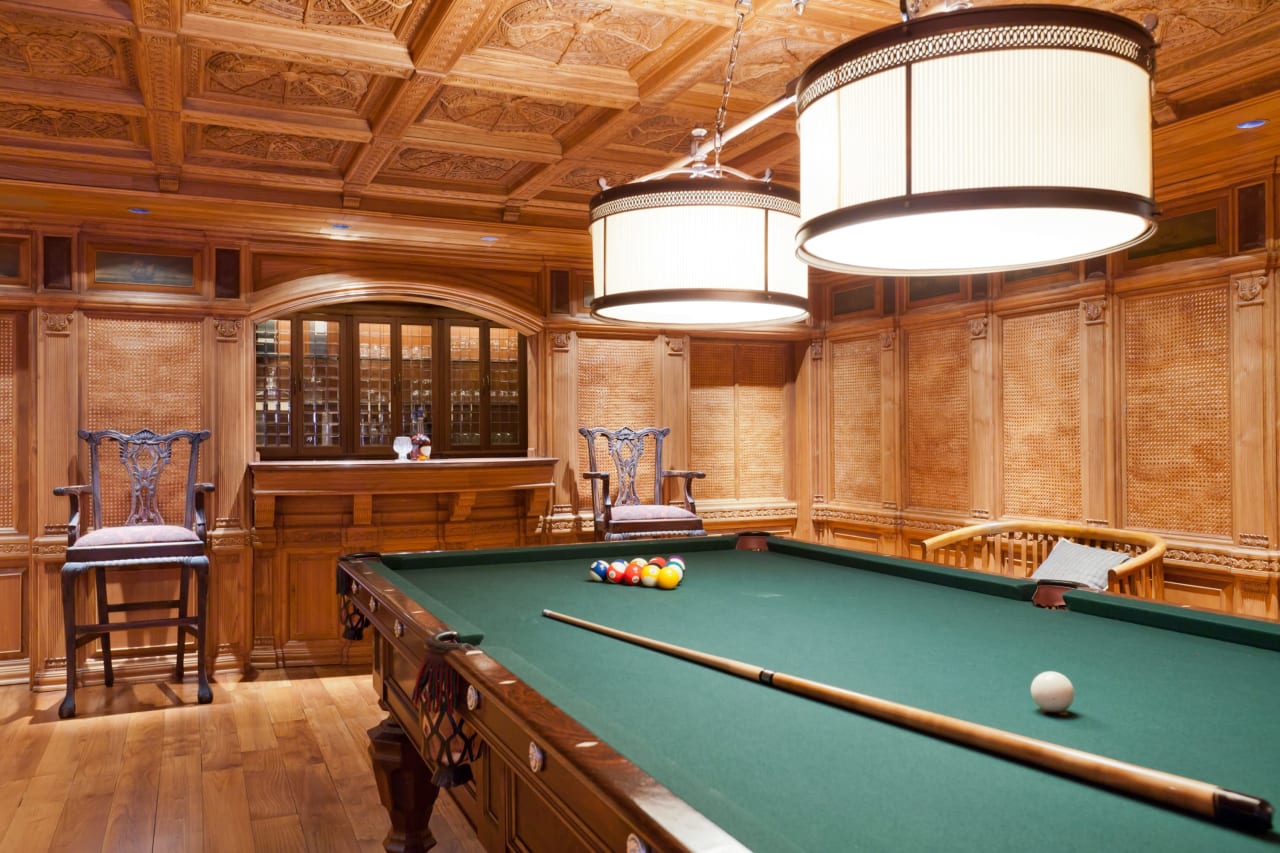

The double front doors of the home open to a gracious foyer leading to the dining room on the right and parlor to the left while a wide archway leads from the foyer to the music room at the rear of the central core.
The striking architectural details of the grand dining room include the original plaster medallion ceiling and elaborate hand-carved moldings of the chimney mantel. The original marble originates from the Italian family quarry of Michelangelo Buonorroti. The silk wall treatment was hand painted in China and depicts delicate bird and tree scenery. The dining room is centered on the fireplace, flanked on both sides by two alcoves featuring beautiful hand carved moldings that match the moldings of the wainscoting.
In perfect symmetry with the dining room, the parlor is also centered on a fireplace with a surround from the same quarry and similar mantel. Striped silk upholstered walls complement furniture covered in a fabric replicated from the French court of the 18th century. Although its provenance is grand, the natural elements in the fabric give it a country home feel.
The rectangular music room located behind the foyer, dining room and parlor, is of expansive proportions centered on a beautiful arched window with hearths on opposite walls. The full size rug was custom woven in India. Cream colored raw silk fabric elegantly dresses the walls and enhances the warm glow of two oversized brass chandeliers. The use of fabric on the wall and the rug contribute to the music room’s excellent acoustics.
The owners and their architect completely redesigned and expanded the tiny crowded intersection of the five-part Georgian and the wings into an impressive rotunda. Located behind the music room in the central core, the rotunda is a two story modern circular structure allowing on the first floor access through a conservatory from the music room to the chapel and to the family room, and on the lower level, access from the wine cellar and game room to the indoor spa.
A round balcony with forged iron and bronze hand railing is judiciously situated at the center of the conservatory on the first level to allow views into the rotunda below and direct natural light from an oculus above.
Supported by eight 12-foot hand-hewn wood columns, the lower rotunda structure is a powerful and elegant circular room with a hand-cut limestone floor and two Chinese scribe chairs.
The hyphen from the formal central core of the house to the kitchen is a sunny room providing access to the rear balcony through a set of French doors. A rebuilt staircase leads up to the bedrooms or down to the catering kitchen and staff quarters. The hyphen and the kitchen hardwood floors were restored with salvage wood from other homes of similar vintage.
Enjoying a southern exposure and spectacular river views, the kitchen opens to a screened porch with invisible and retractable screens. The commercial grade kitchen was carefully designed by the owner to allow for restaurant scale cooking. Viking appliances include a 48” built-in side-by-side fridge, drawer dishwashers and two stainless steel 48” cooking ranges. Painted wood cabinets are complemented with a stone island and counter tops imported from India. Storage space is optimized with abundant cabinetry and a small kitchen office.
The kitchen leads to a large family room centered on a fireplace with windows on each side and with a wall mounted TV on the adjacent wall. A spacious pantry and storage room lie adjacent.
The chapel in the south wing was repurposed into a great hall. Existing light fixtures and timber beam trusses with metal ties were restored while new herringbone-patterned teak floors, walnut wainscoting and trim and a limestone fireplace were installed. Circular windows were also added above arched double doors that lead to a terrace supported by a brick arcade. Below the chapel, a skittle court was converted into a spa and indoor pool.
The spa, located beneath the chapel, is accessed from the rotunda and comprises an indoor resistance pool, sauna, steam room and half bath.
The poolroom, made entirely of limestone and sparsely decorated with Asian architectural pieces, exudes a feeling of contemplative peace. Two gracious arcades spanning the length of the pool line up harmoniously with the outdoors arcade supporting the terrace of the chapel, while the five circular windows on the opposite wall line up with the arches of the arcades. The sandstone floors are warmed through radiant heat. Beautiful arched double glass doors, cleverly designed with a strong vacuum seal, hermetically close off the poolroom, retaining the temperature and humidity level. The pool is safely capped with a solid heavy-duty cover when not in use.
The original exposed brick walls and natural wood beams give the cellar a traditional yet sophisticated country atmosphere. The wine bottles are neatly stacked in three adjacent alcoves while the room is softly lit with two simple alabaster sconces.
Located below the kitchen, the billiard room and bar were rendered entirely in teak creating an inviting and elegant entertaining space. The elaborate hand carved teak medallions in the ceiling and chimney mantel attest to extraordinary craftsmanship. Equipped with screens, the double doors can be left open in the Spring while playing pool to enjoy a delightful breeze. A secret tunnel where arm smugglers presumably hid weapons is accessed from the billiard room through a hidden entrance.
The landscaped roof terrace over the conservatory is accessed from behind the master bedroom and offers great views of the infinity pool and Severn River while providing a comfortable and private space for nonchalant lounging.